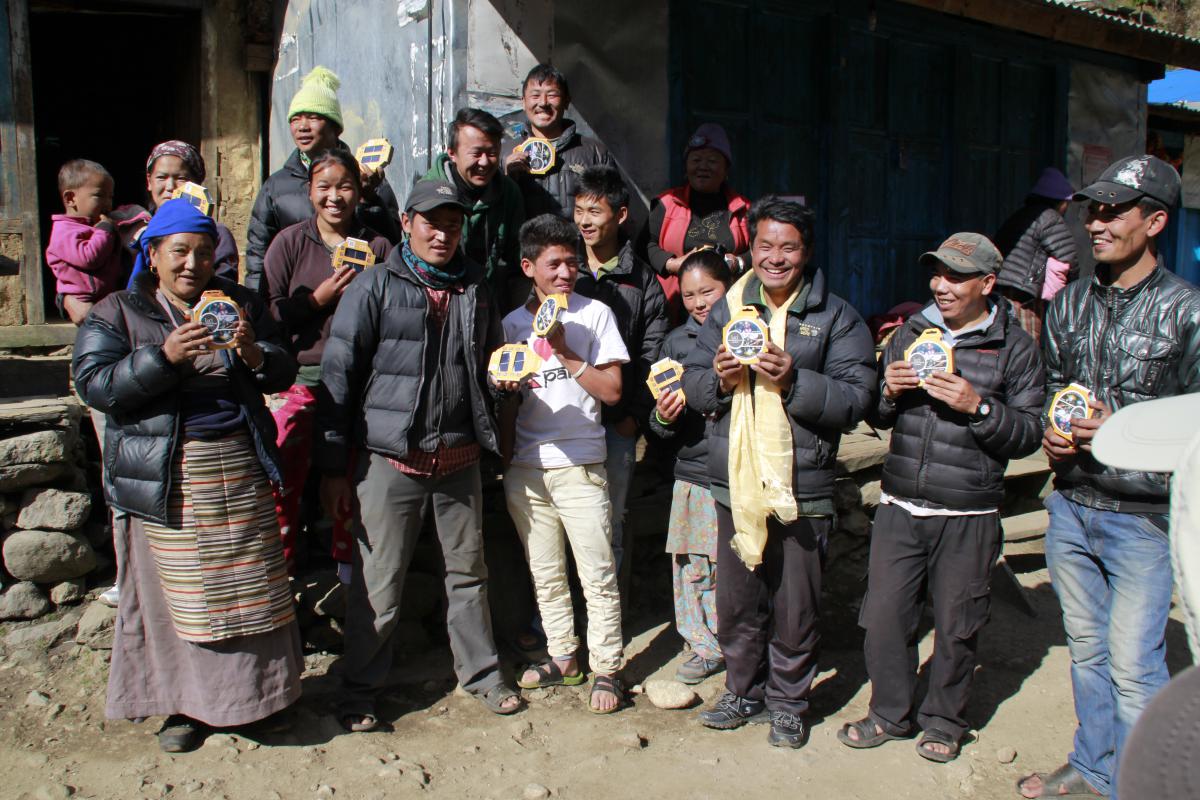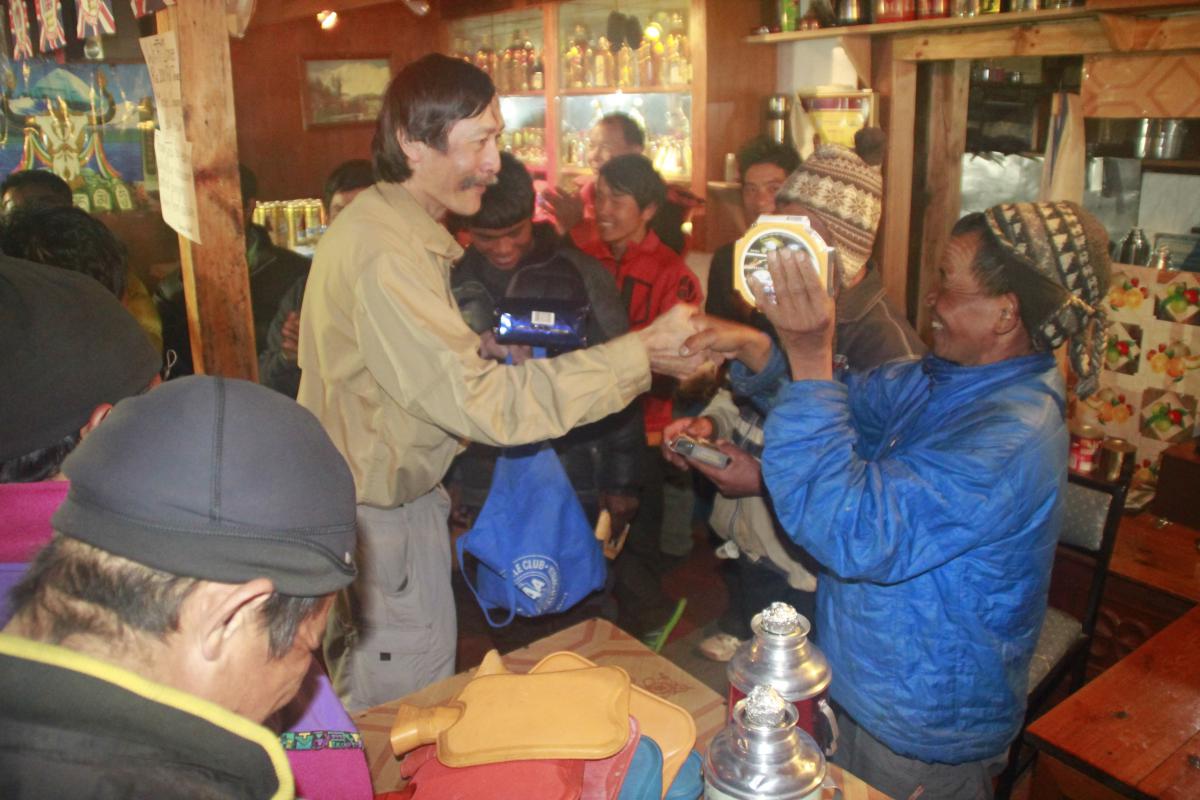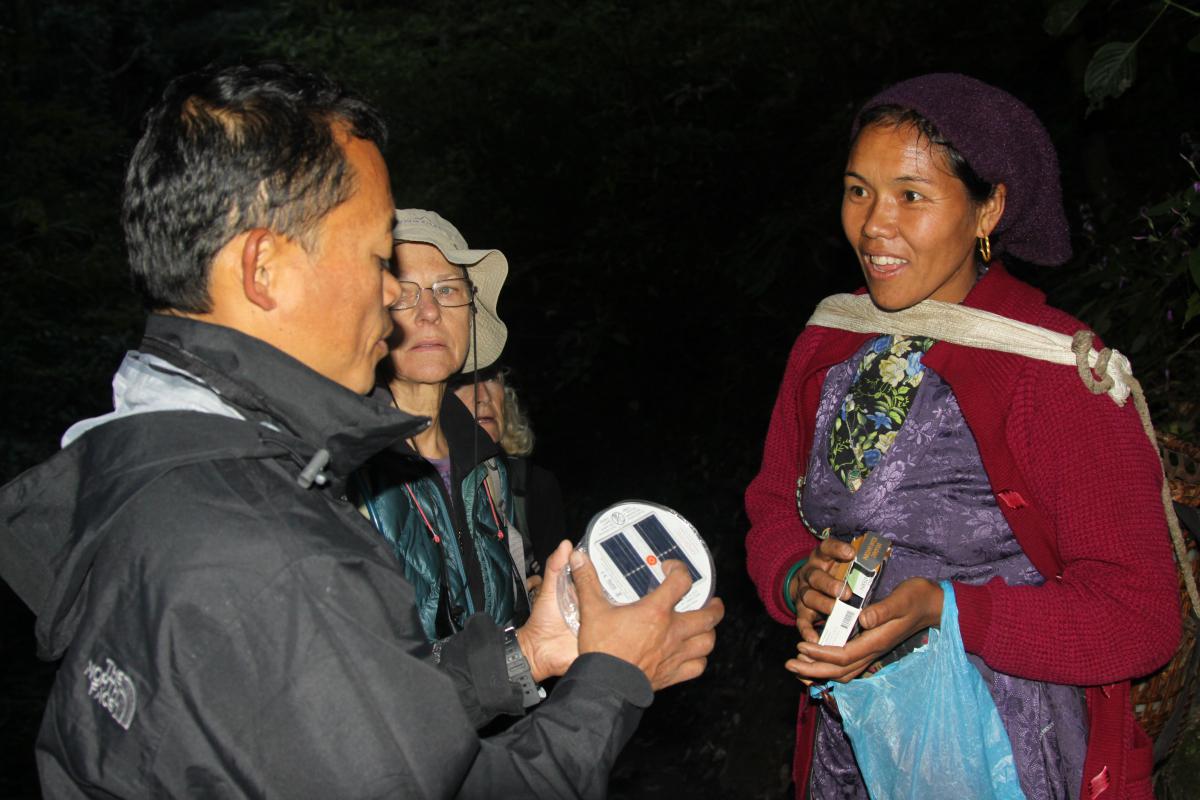 |
| Villagers in Nepal hold up their gifts from Angeles Chapter members: Luci Lanterns. Credit: Barry Koeb |
When leader Fred Dong thought about what gifts he could bring to the guides and porters he had engaged for a Sierra Club trip to Nepal last winter, he thought big. Dong, a recipient of the Chapter's top Chester Versteeg Outings Award in 2014, has organized and led many trips to Mongolia, China, Nepal, Borneo and other parts of Asia.When he travels far, particularly on trips he organizes for the Chapter, he likes to go to out-of-the-way places to become immersed in the culture, the people, the land.
But back to those gifts.
Where's Fred Dong going next? To little-visited sight's in China's Yunnan region, and you can join him. The Angeles Chapter trip runs from Oct. 8 to 21, and there are still spaces available. For price and more information, check out the trip description here.
"I wanted to help the people in Nepal in some way other than just the tourism money our travel brings to the economy for workers wages, hotels, restaurants, souvenir purchases, airlines, and buses, etc.," Dong says after he returned. "The tourism money is certainly helpful to benefit the people through the jobs that are created and the small merchants or craftspeople that sell things to us."
 |
| Trip leader Fred Dong, left, gives one of the solar-powered lanterns to one of the porters on his trip. Credit: Maew Suchin |
That's when he thought of Luci Lanterns. If you haven't seen one, they are a wonder: an inflatable lantern that runs on an embedded solar panel. No batteries, no bulky weight, and they're waterproof. Dong bought 60 of the compact lights (they fold down) to give away.
Good for kids' homework
"The idea was to give the lanterns to families that had school-age children who could use them in the evening instead of kerosene lanterns," Dong says. "For about every hour of charging in the sun, the lantern is able to emit about one hour of light. So the lantern could allow a child to work all night on a project. Besides allowing the family to have better light for reading and other work that the family may be doing, the family uses one less kerosene lantern."
| One of the porters demonstrates how the lanterns work. Credit: Maew Suchin |
Since he was leading two different itineraries during last year's trip -- an 11-day sightseeing trip and a 20-day hiking trip to Everest Base camp and Langtang National Park -- Dong brought along the entire case of lanterns to give away. Plans went a little awry when more than 20 were seized by Chinese customs officials. However, he and his group did manage to hand out 39 of the light-bearing lanterns.
In many of the trekking areas, only the more prosperous people such as the innkeepers or restaurant owners have solar power of their own. For others, it's an expensive proposition to use fuel -- natural gas, kerosene, wood, or dried animal dung -- to create light.
 |
| A villager appreciates the gift of light. Credit: Barry Koeb |
With the sightseeing group, members gave away a few lights to poor villagers identified by our guide Sanga Rai. Our hiking guide, Udas Tufan, found poor Nepalese people along the trail, some workers at the hotels or restaurants.
Dong also found one poor village where he and the group gave away lights to 15 families. One thing that struck him: Most of the porters who carried the group's luggage on the hiking trip came from poor areas that did not have electricity. These porters came from villages that were one to two days' of a long walk from the Mt. Everest base camp trail, one of the most popular trekking places in Nepal.